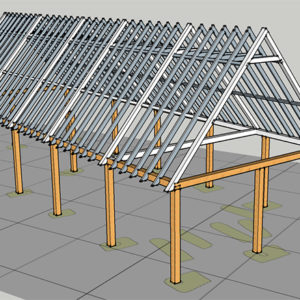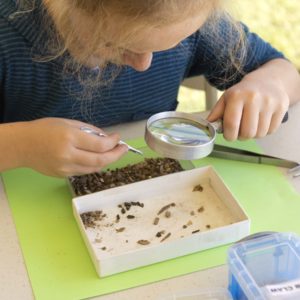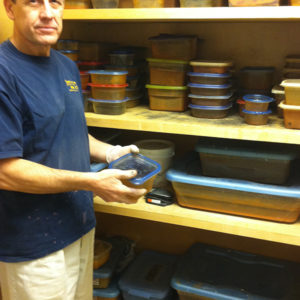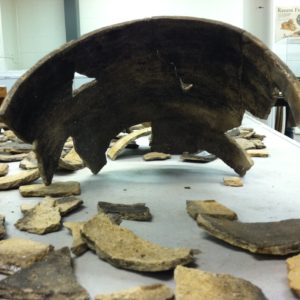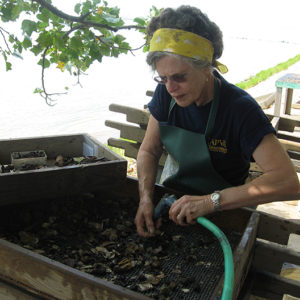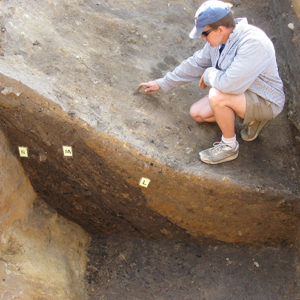This winter the Jamestown Rediscovery team is focusing on writing reports, research, conservation, archiving photos and field notes, updating websites, and digital map work.
Senior staff archaeologists Jamie May and David Givens are constructing a digital model of the 1608 church that the project has explored over the past two years. Using Google SketchUp, a 3D computer modeling software, May and Givens are transposing the digital map of the physical church site produced in the field with laser surveying equipment into a 3D hypothetical model of the church. Once placed on the archaeological map, this model will help give an idea of the scale and appearance of the building.
In the lab, about 300 artifacts are currently undergoing conservation. Most of these artifacts are iron, which takes longer than other materials. About 200 of the artifacts have already been mechanically cleaned, which means that conservators have manually removed rust and other concretions. These objects are now undergoing chemical stabilization where many are soaked for months at a time in deionized water to remove soluble chlorides. These artifacts will all go through a series of steps to dry them out. Ultimately all of the metals are sealed with an acrylic as a final barrier to the environment. The above steps will greatly lower the potential for further corrosion.
Nearby in the vault, where the conserved artifacts are ultimately stored, senior curator Beverly Straube has hundreds of fragments of Virginia Indian pottery laid out on a table. These pottery sherds all come from the same feature, the colonists’ first well. Bly is mending the fragments back together, and in many cases she can determine that all of the pieces of a given vessel were found. This suggests that the settlers may have been using the local wares in the fort. It also may indicate, along with evidence of stone tool making and shell bead manufacture, that Indians were living in the fort as well.
The video this month demonstrates how we discover very small—but important—artifacts in material that was collected while screening the soil from the fort’s first well through fine window mesh.
related images
- 3D digital model of the 1608 church
- A visitor to Jamestown looking for very small artifacts in material from the first well
- Archaeologist Don Warmke stands next to a cabinet in the lab where artifacts are soaked in deionized water
- Conservator’s desk with artifacts in queue for conservation
- Senior curator Bly Straube mending Virginia Indian pottery from the fort’s first well
- Virginia Indian pottery laid out in the vault for mending
- Volunteer archaeologist Gere Brown water screening dirt from the first well through three screens



